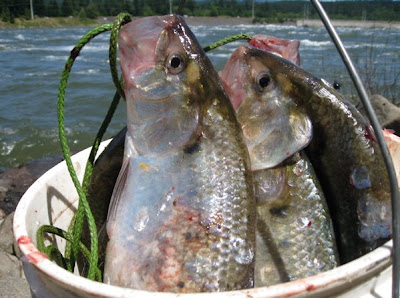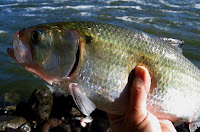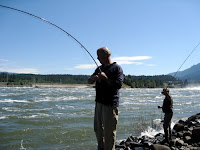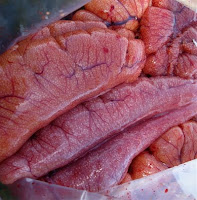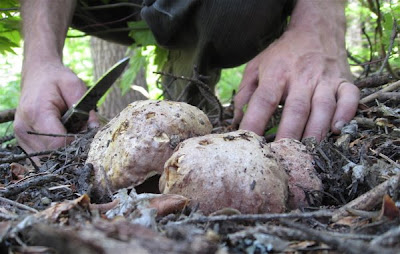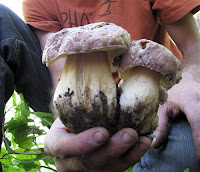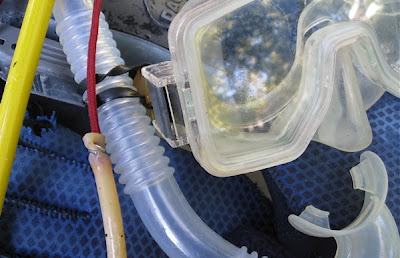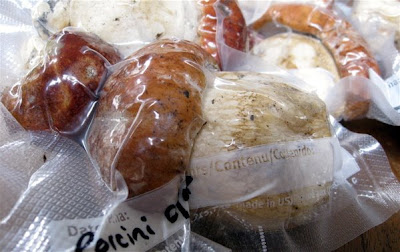
You say you didn’t land any spring kings despite the fisheries biologists’ predictions of a banner year? Me neither. But spring Chinook are not the only kings of the season. The fungal kingdom has its own spring royalty—king boletes—and though the exact species name is up for grabs, we can all agree that what the Italians simply call porcini is out there on the East Slope of the Cascades and Sierra Nevada right now.
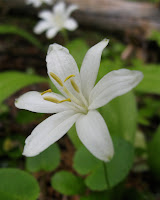 I love hunting for spring kings and I love eating them. In Washington these mushrooms seem to be most prevalent around true firs, although experience shows that certain hardwoods can be important too. They start popping as early as April in California and Oregon, but here in Washington I don’t bother checking my patches until June, usually as the morel harvest is waning. Queen’s cup lilies are a good indicator for timing.
I love hunting for spring kings and I love eating them. In Washington these mushrooms seem to be most prevalent around true firs, although experience shows that certain hardwoods can be important too. They start popping as early as April in California and Oregon, but here in Washington I don’t bother checking my patches until June, usually as the morel harvest is waning. Queen’s cup lilies are a good indicator for timing.
Professional foragers grade their mushrooms for market. No. 3’s are the big mature kings that can be spotted even from a speeding car. Also called “flags,” they’re often useful beacons for finding the more desirable no. 2’s and no. 1’s. 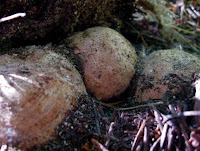 The former have just emerged from the duff and are still firm, with convex caps and white pores underneath the cap; the latter are harder to see because they’re still in the “button” phase underground, with caps that have just started to open. A trained eye can see the mounded duff that buttons push up, known as “mushrumps” to hungry mycophagists. Hunting for no. 1 buttons is good sport.
The former have just emerged from the duff and are still firm, with convex caps and white pores underneath the cap; the latter are harder to see because they’re still in the “button” phase underground, with caps that have just started to open. A trained eye can see the mounded duff that buttons push up, known as “mushrumps” to hungry mycophagists. Hunting for no. 1 buttons is good sport.
Here’s a video that shows the habitat and the progression of looking for spring kings, from flag to button:
While I usually dry my excess boletes for later use in soups and stews, apparently you can freeze the buttons, so this year I’ve vacuum-sealed and frozen about 10 pounds of porcini buttons. I’ll post the results after thawing and cooking the first batch later this summer when the flush is over.
In the meantime, I’ll be eating fresh porcini with morning eggs, sauteed for lunch sandwiches, and prepared in all manner of ways for dinner, from pasta sauces to grilled to stewed. Their meatiness and nutty-woodsy flavor make porcini one of the great treats in all of fungaldom.


